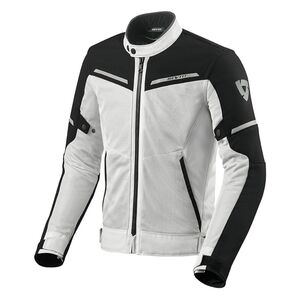How much should you spend on your motorcycle gear? The question is really hard to answer, but people ask all the time, so I figured I’d give it a go. Riders do varied kinds of riding, live in diverse climates, have different budgets, and have their own personal styles, so no single answer can apply to everyone.
To narrow down the topic a little, this article will be focused on street riding. I have examples of helmets, jackets, gloves, riding pants, and riding footwear to cover you from head to toe, as well as a few additional suggestions that riders often overlook. And with that, let's dive in with the most important piece of gear, your helmet.
Why do some motorcycle helmets cost more than others?
Your brain is important and therefore the helmet you wear to protect it is also important. Does that mean everyone needs to go buy the most expensive helmet they can find? Absolutely not. In fact, I often find myself arguing the opposite.
A $1,450, AGV Pista GP RR Carbon Helmet is an incredible helmet but it’s designed for high-speed, track-riding applications. It will excel in that particular riding scenario but that doesn’t make it the best option for a rider who is just zipping around town and going on longer rides on the weekends. 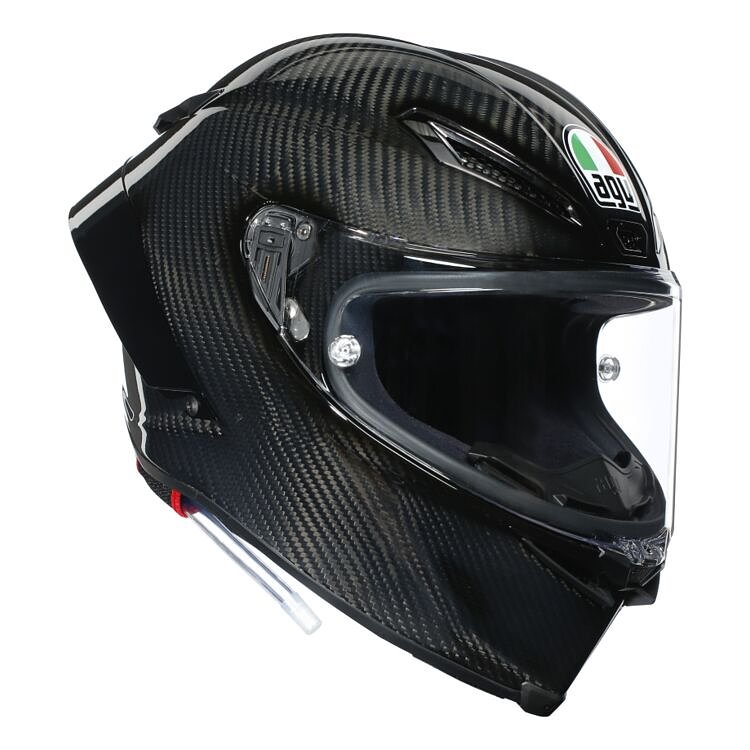
This point applies to all gear, not just helmets: Just because a piece of gear costs substantially more than another doesn’t mean it’s a better option. It’s far more important to figure out the type of riding you plan to do most and go from there. Once you establish the type of riding you plan to tackle, (street, track, off-road, ADV, MX, etc) this will dramatically help you narrow down the thousands of gear options available.
Since we're talking about street riding in this article, the next step is to narrow it down even further. Are you commuting to work? Taking long tours? Do you love pushing the limits on your sport bike on curvy roads? What kind of bike do you ride? Answering these questions can take riders down different avenues on their quest for gear. And while the kind of riding you do may change as you grow into motorcycling, answering these basic questions will help you get pointed in the right direction to start.
Back to helmets! For the average street rider looking to snag a full-face helmet, comfort, protection, and weight are often the most prominent features. Here are a few options at different price points.
Good: A good option might be something like the Scorpion EXO-R420, the Bell Qualifier, or maybe something like the HJC C70. They're all under $200, relatively lightweight, relatively quiet, with decent airflow and comfort. Additionally, the Qualifier and the EXO-R420 have safety certifications beyond the standard DOT sticker, which is rare for the sub-$200 price point.
Better: With the knowledge I have now, I probably would have waited and saved up a few extra bucks before purchasing my first lid back when I was a beginner rider. Moving into the “better” category typically provides you with a bit more versatility, comfort, and greater safety certifications. For example, the AGV K1 Helmet, the Scorpion EXO-R1 Air, and the HJC RPHA 70 ST are excellent options. They’re a bit more comfortable and quiet in comparison to the “good” options, a bit lighter, ECE-certified, and the 70 ST has an internal sun visor. And yes, you can find more economically priced options with an internal sun visor but they don’t always have the best execution and are often noisier.
Keep in mind that these choices are opinions and not every rider will have the same experience in a particular lid or piece of gear. And with that inspiring note, let's look at some of the “best” options and why would you might spend the extra guacamole.
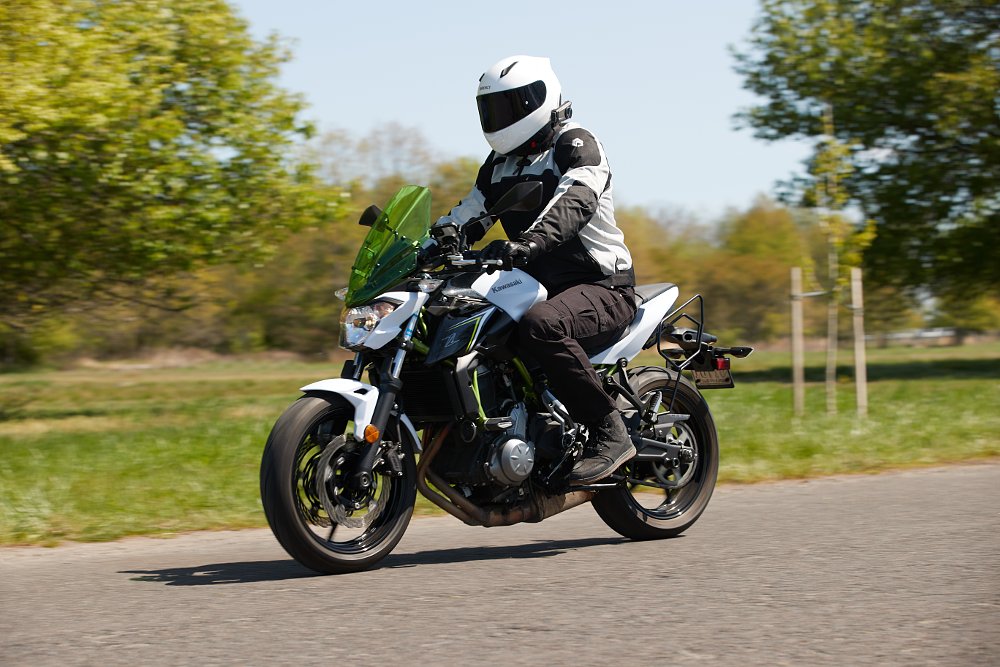
Best: From my experience with helmets, the “best” options are typically the most quiet, light, well balanced, and comfortable helmets. Noise is incredibly subjective and can vary greatly from one rider to the next, but as a general rule the helmets in this category provide excellent noise reduction. The benefit of light weight is pretty obvious in reducing fatigue but balance also factors in. When I say a helmet is well balanced, I mean it doesn't carry too much weight in one particular location, which can make it feel heavier. Noise levels, weight, and balance all become much more important if you ride more often or for longer distances.
Additionally, the interior liners are more comfortable when you start searching in the “best” category. It’s not always something you can appreciate unless you have the ability to try on a “good” option and then directly compare it to a more premium “best” option. I try on helmets constantly so I generally notice right away if a helmet has a less than ideal interior liner. You may also notice that the interior liners will allow some customization so riders can fine tune how their helmet fits.
Some of my favorites in this particular category are the AGV K6 (video above), Shoei RF-1400, Bell Race Star Flex DLX, and the Arai Regent-X Helmet. I’d also note that the HJC RPHA 11 Pro falls right in between the “better” and “best” category in my opinion. The interior isn’t amazing but it’s an excellent helmet for the money.
Depending on the kind of riding you do, the benefits and features you prioritize might change a bit. For example, some touring riders prefer modular helmets or they must have an internal sun visor to eliminate the need to carry around extra shields. Again, it's not about which helmet is the best, but which one is best for you and the riding you do. And while there is plenty more that could be discussed about helmets, let's keep this train moving to our next stop: jackets!
Do you need a motorcycle jacket for every season?
The “good," "better," "best” approach also applies to jackets, but I personally feel they’re a bit more straightforward compared to helmets.
For example, riding in the summer? Look at lightweight textile and mesh jackets like the REV’IT! Airwave 3. They’ll be significantly cheaper than leather jackets and they’ll flow a ton of air to combat the summer heat.
Want leather but also want a lot of airflow? Check out perforated leather jackets like the Alpinestars GP Plus R v3 Airflow Jacket or jackets that have a leather and mesh combination, like the REV'IT! Ignition 3 Jacket.
Riding in inclement weather? Check out four-season jackets or jackets that have a waterproof exterior and allow you to add or remove layers as needed, like the Sedici Avventura Waterproof Jacket.
Focus on the weather conditions you’ll be riding in most. A $850 Dainese Super Speed 3 Perforated Jacket is an excellent jacket but it’s not going to be a better option than something like the Sedici Avventura WP Jacket if you’re riding in inclement weather on a routine basis.
As a jacket's price increases, you’ll generally find more use of the latest and greatest materials, greater refinement, and a higher level of comfort. And with winter or waterproof jackets, the increased price point often gets you Gore-Tex, removable layers, and greater versatility.
While we’re on the subject of jackets, I generally recommend having a jacket for summer and having another jacket for cooler or inclement weather. Of course this doesn't apply if you only choose to ride on warm, sunny days, but for riders who want to stretch the riding season or rely on their motorcycles for essential transportation, a two-jacket approach is the way to go, in my opinion. In my experience, a four-season jacket does a “good” job in a variety of riding seasons but they often don’t excel in one particular riding season outside of the winter. Buying a less complicated summer jacket and a cool-weather jacket may not be more expensive than trying to find one jacket with multiple removable layers and vents that works in all conditions.
Keeping your core nice and warm is essential on colder rides, but cold, stiff, or numb fingers are no bueno when you’re trying to operate the controls on your motorcycle. And on that note, let’s chat about those little finger houses.
Are motorcycle gloves worth wearing?
For better or worse, our natural instinct is to put our hands out in front of us to brace for impact in the event that we’re falling down. I said a helmet is most important because your brain is your most important organ, but life gets really difficult if you can't use your hands, too. Gloves not only protect your hands but they can also help quite a bit when it comes to riding comfort, shielding you from cold, vibration, or even that pebble that gets kicked up and hits your knuckles at 65 mph.
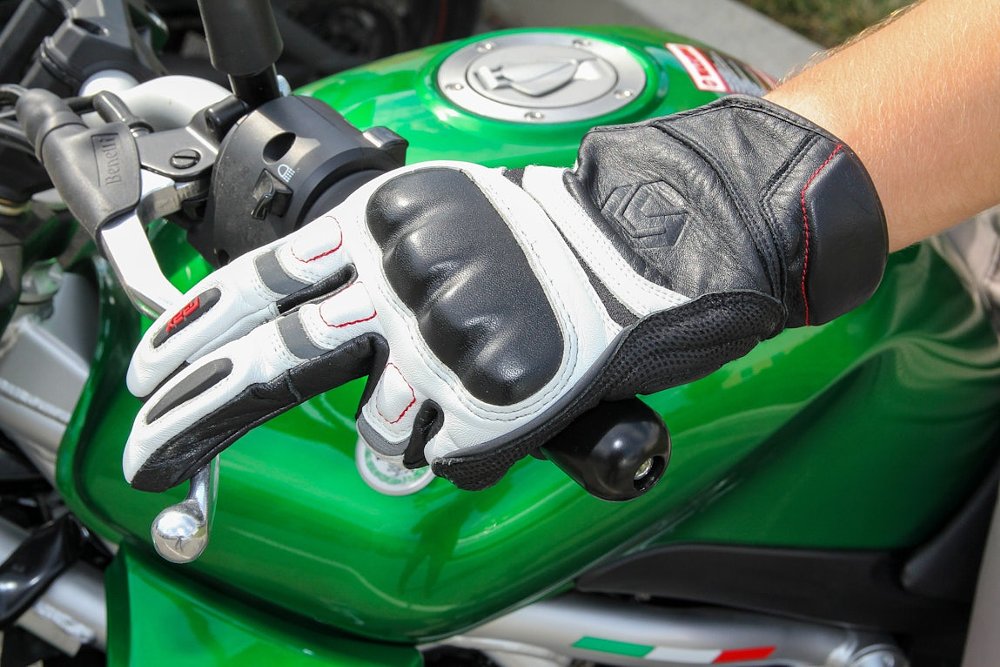
Much like jackets, gloves come in many forms with varying features and levels of protection. You can find waterproof gloves with a brand's proprietary waterproofing, gloves with Gore-Tex, full-gauntlet gloves, short-cuff gloves, leather gloves made from cow, goat, deer, or even kangaroo hides, mesh gloves for hot-weather airflow, heavily insulated gloves for winter riding conditions, and even insulated gloves with no insulation on the palm side to accommodate heated grips. There’s a lot of options to choose from. Like with the rest of your gear, you can narrow your search by figuring out the climate and kind of riding style you plan to do most.
Summer riding? Go with something that provides excellent breathability or utilizes a goatskin and mesh combination. Do you often ride in colder or rainy conditions? Check out some waterproof gauntlet style gloves for greater coverage and protection from the elements. For more protection, look at sport gloves that have features such as double layers of leather in impact areas, padding, and hard knuckle protection.
And speaking of protection, motorcyclists most commonly sustain injuries to their lower body in the event of a crash. After breaking my leg and tearing a bunch of ligaments at the motocross track, I’m here to tell you, having the right gear makes all the difference. So don't forget riding pants.
What makes a pair of pants motorcycle pants?
Motorcycle pants are often very similar to moto jackets when it comes to the versatility, materials, and protection they provide. I think one of the major differences here when compared to moto jackets is the increasingly popular segment of riding jeans. Riding jeans provide a fair amount of abrasion resistance and impact protection with a casual style that can be comfortably worn both on and off the bike. I actually wore my Bull-it Covert Evo Slim Jeans from southern Utah all the way back to Philadelphia. For that amount of riding time and mileage, comfort was one of my biggest concerns. Though I still love my Dainese New Drake Air Textile pants, it's hard to beat the comfort of riding jeans. Some people like to be able to walk around at their destination without sticking out like a sore thumb and riding jeans fit right in.
When it comes to cost, riding pants are generally a bit more economically priced than their matching jackets. But again, just like moto jackets, the cost rises when you start adding features, such as Gore-Tex pants for waterproofness or riding pants that offer removable layers for greater temperature versatility. Again, it comes down to matching the pants to your needs. Don't forget to consider the armor that comes with the pants. Knee armor is usually the minimum. Some provide hip armor, while others only offer abrasion-resistant panels. Also, some pants provide pockets so you can add more armor later, if you want.
The last piece of protection for the lower body are riding boots.
What's the difference between riding shoes and boots?
Casual riding shoes and boots provide a combination of all-day comfort and protection. And while riding shoes offer more protection than regular shoes, they don’t offer the same level of protection as a pair of riding boots. Casual riding boots provide greater coverage and are generally a bit more stiff, which is a bit more protective compared to casual riding shoes.
When you start looking into the sport and sport-touring style boots, you’ll gain a bit more coverage, better torsional and lateral protection (preventing injuries from twisting forces), and excellent crush protection. The soles are often a good bit stiffer in comparison to casual footwear, too. Sport-touring and touring boots are also available in waterproof versions and at the other end of the spectrum you can find sport boots made of perforated leather for when you're riding hot and fast.
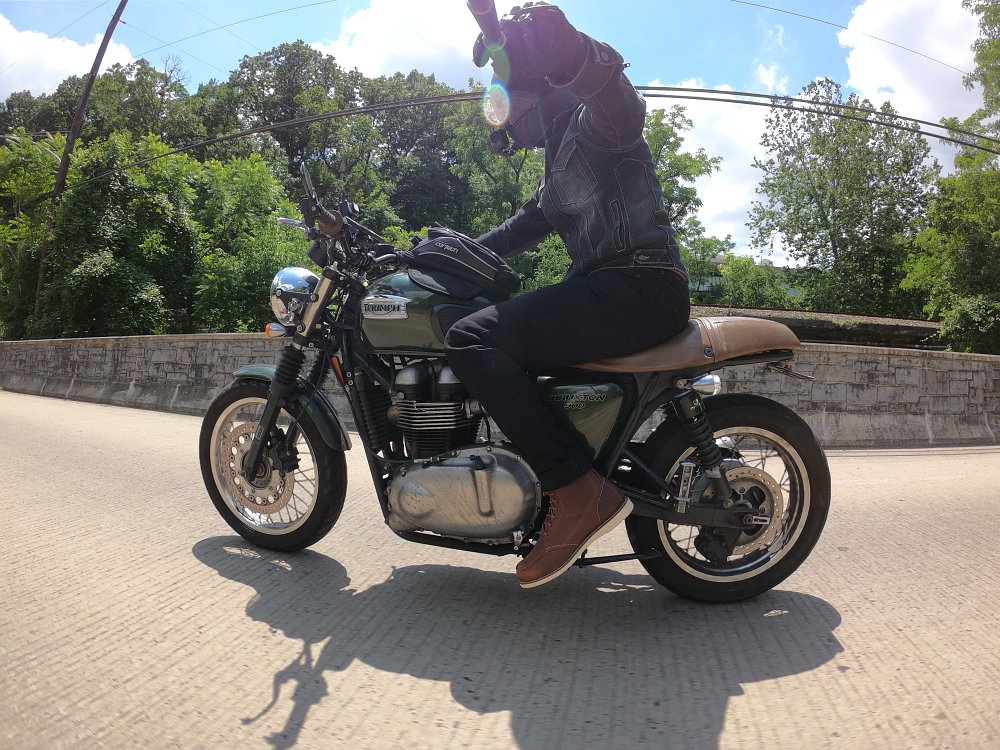
From the comfort of casual riding shoes to the protection of full-featured sport boots, there's something for everyone. As I've said many times already, it's just about matching the right gear to your riding and preferences.
And with all of this in mind, let’s get down to brass tacks. How much does all of this stuff cost?
How much should you spend on gear?
Given all the factors and considerations discussed above, coming up with a single number that is going to work with every rider is truly impossible. There are way too many variables.
But, if you take a good, better, best approach for the helmets and look at some of the staff picks, favorites, and best rated options for the other pieces of gear, I think there is a quality guesstimation riders can budget for.
And from my calculations, I think riders should expect to spend approximately $850 to $1,200 for a full set of gear in the street-riding segment. Obviously, this number is highly subjective and depends on the kind of riding conditions you want to be prepared for, but you can get a quality set of gear, head to toe, that will be both functional and protective around that price range. Of course if you want to step up to a higher level of quality or more features, that number will rise. To provide more context as to where this estimate came from, I have listed a few options within each category below.
| Gear examples, price points, and categories | |||
|---|---|---|---|
| Helmet |
Range: $150 to $250 |
Range: $250 to $450 |
Range: $450+ |
| Jacket |
Summer textile: $270 |
Sport perforated leather: $525 |
Four-season textile: $580 |
| Gloves |
Summer short-cuff: $60 |
Summer gauntlet: $130 |
Winter gauntlet: $180 |
| Pants |
Riding jeans: $170 |
Leather riding pants: $250 |
Textile riding pants: $270 Dainese Drake Super Air Tex Pants Four-season textile pants: $470 |
| Riding shoes and boots |
Casual riding shoes: $180 Casual riding boots: $240 |
Sport boots: $300 |
Sport-touring boots: $320 |
And while this should cover you from head to toe, there are a few items that I think riders often overlook and should take into consideration when budgeting for gear.
Better to have and not need than to need and not have...
Rain Gear: Even if you never plan to ride in inclement weather, it's great to have rain gear on standby. The forecast isn’t always right and it’s better to be prepared than wet and shivering. Rain gear will cost approximately $100.
Tire repair kit: Flat tires suck but they happen. A flat tire repair kit is an easy way to get back on the road with minimal delay. Flat tire repair kits cost around $40.
Back protector: More often than not, moto jackets will not come with a real back protector. Often, there will just be a flimsy foam pad in the back protector pocket of the jacket. Back protection is highly recommended and can make a significant difference in preventing injury. You’ll find standalone back protection that is designed to be worn underneath a jacket or race suit or back protectors that slip into the pocket in the jacket. Just make sure the back protector you're considering is the right size and shape to fit your jacket. Back protectors range in price from CE1 protection around $30 to CE2 protection around $200. On average, for a quality CE Level 2 back protector insert, you should expect to spend about $70 to $100.
Common questions
Q: Are leather jackets better than textile jackets?
A: This is a pretty common debate among riders and there’s not exactly a clear-cut answer. The R&D for textiles has advanced and ultimately, it comes down to the type of riding and the climate a jacket will be utilized for. Luckily, I’ve taken a deeper dive specifically into leather jackets versus textile jackets if you’re looking for more details. Additionally, there’s a few other common debates, such as short cuff versus gauntlet gloves, riding shoes versus riding boots, and full-face versus modular helmets that might be worth looking into if you're choosing between gear.
Q: What are torsional and lateral protection?
A: This is terminology you'll commonly see used in the moto world when discussing riding boots and shoes. Torsional and lateral injuries are caused by a twisting motion. If a riding boot has good torsional and lateral protection, it most likely has a strong backbone or hinge system that runs along both sides of the foot and ankle. This provides greater stabilization and protection against those twisting motions, which often lead to injury. Knee braces work in a similar fashion. They support the leg and knee to help prevent injury from aggressive twists and pivots to the leg and knee.
Q: What is a Pinlock insert?
A: A Pinlock insert is a piece of clear plastic material with silicone edges that goes on the inside of a helmet's face shield. The silicone material helps create a seal around the edges of the insert, which creates a “dual-pane window” type of effect and prevents the visor from fogging. From my experience, Pinlocks have worked much better than any anti-fog sprays I’ve used in the past.
Q: What does CE Level 1 versus CE Level 2 protection mean?
A: These ratings are associated with the armor often found inside riding gear. These pieces of armor are tested and the amount of force the armor allows to pass through will determine its rating. CE Level 2 armor is more protective than CE Level 1. With that said, CE Level 2 armor is sometimes a bit more bulky in comparison to CE Level 1 armor. So, there is sometimes a bit of a tradeoff between comfort and protection.
Conclusion
When I first started riding, I didn’t take into consideration what gear would cost me. I got the bike, a $100 helmet, and I hit the road. Luckily, I didn’t literally hit the road, because I don't know how that helmet would have stood up. But, as a poor kid hiding a motorcycle from his parents, a $100 helmet was a lot of money.
Eventually, I got all the right pieces of gear but looking back, I would have been far more comfortable and a hell of a lot safer if I had budgeted accordingly.
At the end of the day, how much should you spend on motorcycle gear is completely up to you. I know plenty of riders who rock a helmet and that’s about it. But, any seasoned rider will tell you that proper gear will elevate your riding experience and keep you more comfortable and protected for the road ahead.














